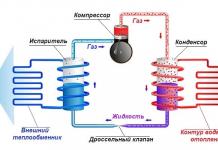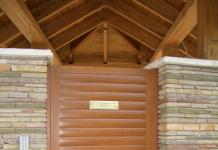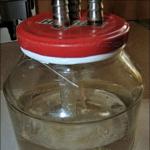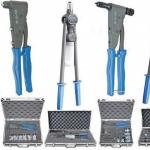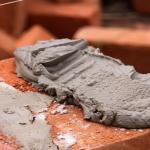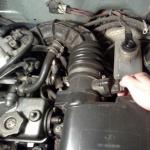In this material, we will discuss such a seemingly insignificant device as a water seal for mash. What is it for, and what is it? It is needed, first of all, to remove carbon dioxide from the fermentation tank. This gas is continuously formed in the fermentation tank and is released about four cubic meters per liter of alcohol produced during the fermentation process. But this gas must not only be removed, but removed in such a way that oxygen does not enter the mash along with air - otherwise, in parallel with alcoholic fermentation, other processes harmful to proper mash may develop. For example - the formation of acetic acid, and the souring of mash. Thus, the water seal during the fermentation process should act as a check valve. Secondly, the water seal serves as a kind of indicator that fermentation is in progress, and its intensity can be judged by the rate of release of gas bubbles. By the way, this is the most reliable method for determining the readiness of the mash - the "bubbling" in the water seal has stopped - which means that the formation of carbon dioxide has stopped, and the fermentation is over. All other "folk" methods for determining the readiness of the mash, such as flashing the vapors of boiling mash, or extinguishing a match over the mash, can only say that there is already some amount of ethyl alcohol in the mash or carbon dioxide accumulates above its surface.
And thirdly: a water seal can also serve to divert the tse-o-two released during the fermentation process not into the atmosphere of the room, but straight into the sewer, and a description of such a water seal design will be given below. This is especially true for an apartment - a water seal with a drain into the sewer completely eliminates the smell in the home during the fermentation of the mash. And here is a schematic representation of the operation of a water seal for mash with gas discharge into the sewer:
In this scheme, carbon dioxide from the fermentation tank enters the water seal through a hose, where, overcoming the pressure of the liquid column h, it is sent to the sewer. And the gases from the sewer cannot overcome the pressure of the liquid column and remain where they are supposed to be. But we will assemble such a water seal with our own hands.
The easiest way, it seems to me, is to make such a device from a jar with a tightly screwed lid, from under mayonnaise, for example.
In the market, I bought these homemade stainless steel fittings.
Their diameter is about 12 mm, just under the commercially available 12 mm PVC tube. They are not expensive at all - 5 pieces cost me about $ 1. And the fact that they are of different lengths does not bother me much, it does not play a serious role! We drill two holes in the selected cover for the water seal:
True, I did not have such a large drill at my disposal, and I drilled with what was:
And to the required diameter, it was flared with a cone-shaped object of suitable sizes:
In my case, thin-nosed pliers fit perfectly:
Making homemade wine, in addition to various ingredients: jam, raisins, etc., is not complete without glass containers and a water seal. You can make a water seal for wine with your own hands at home from improvised materials, or you can buy a ready-made one. Let's choose the first option, and find out how you can make a water seal for making wine drinks on your own, in different ways.
Water seal for homemade wine: is it necessary or not?
First you need to understand what a water seal means when making wine, why it is necessary. And it is needed for the following purposes.
To remove carbon dioxide from the tank
With the help of a water seal, home winemakers remove carbon dioxide from the tank where the raw materials for wine roam. The gas is formed there continuously and requires a constant output, moreover, in such a way that oxygen does not get into the future wine.
If it gets there, along with alcoholic fermentation, unnecessary processes may start, for example, acetic acid will begin to form in the container, due to which the mash will simply turn sour, and the wine will not turn out. And the water seal in this case acts as a check valve.
To determine the presence of a fermentation process
A water seal helps to understand whether fermentation is going on in homemade wine, and how intensively.
For example, if “bubble” has stopped in it, this indicates that fermentation is complete.
To eliminate odor from fermentation
With the help of a water seal, you can remove the smell from fermentation into the sewer. Thus, the house will not smell unpleasantly of mash.
Now we will learn how to properly make a water seal for wine at home.
Options for water seals for making a house
Homemade water lock for wine from a glove
If the raw materials ferment in a glass jar, an ordinary rubber glove can serve as a water seal, but not an economic one, but a medical one: it stretches better.
We put a glove on the neck of the jar, fasten it well with an elastic band and pierce one of the fingers. During fermentation, it will inflate with the emitted gases, and their excess will exit through the hole made.

As soon as the fermentation stops, the glove will hang. By the way, the glove can be replaced with a balloon.
Before learning how to properly make a water seal for wine, we buy a glass jar with a lid and a piece of hose. This design option is suitable for regular cans and bottles with a narrow neck. For a jar, you need a simple polyethylene lid, for a bottle - a rubber one.

We make a water seal as follows:
- We punch a hole in the lid along the diameter of the hose, which should not be too small so that the hose does not clog with foam.
- We insert the hose into the hole and seal the contact area with the cover with plasticine or glue so that air does not penetrate.
- We close the container with a lid with a piece of hose and seal the contact area of \u200b\u200bthe lid and the can (bottle) with adhesive tape or plasticine. The hose must not touch the must.
- At the same level with the container, we put a jar of water and immerse the end of the hose there. We fix it so that it is constantly in the water.
The main thing is that the water seal is airtight, only then fermentation will proceed correctly.
How to make a water seal for wine from a medical syringe
To get started, we buy such devices:
- Stationery gum (you can use a piece of twine);
- Syringe 10 ml and another one slightly larger;
- Dropper.
To begin with, we take out the fittings from the syringes and throw them away, and cut off the tube from the dropper, leaving a piece 3 cm long.
- Using a needle, we tear off the filter located inside the dropper - it will not be useful.
- We insert a 10 ml syringe into the dropper, directing the transparent hose inward. We position the second syringe so that both syringes are located in a jack, and we fasten the structure with an elastic band. A small syringe collects carbon dioxide, a large one contains water.
- We connect the noses of the syringes with a hose from the dropper, the length of which should be such that it does not break.

The water seal is ready, it remains to install it on the container and use it for its intended purpose.
For it, you will need a part of the dropper through which air is supplied to the vial. To make this shutter yourself, follow the instructions:
- We close the jar (bottle) with a plastic lid (cork from the bark).
- We make a hole in the cap (cork) by piercing it with a needle from a dropper.
- We lower the free tip of the tube from the dropper into a bottle or jar of water.

Thanks to this design, carbon dioxide will easily exit the container through the tube, and water will not allow air to penetrate inside the jar (bottle). If the wort is fermenting, air bubbles will float up in a jar of water; if it stops fermenting, they disappear.
Now you know how to make a water seal for wine with your own hands. It remains only to buy a few simple "spare parts", make a water seal and make aromatic wine.
18 commentsWhat is a water seal? We make a water seal with our own hands
Greetings, dear readers! Anyone, even a novice winemaker or moonshiner, cannot do without a water seal. In this article, I will tell you what this device is, what it is for, and also show you how to make a fermentation water seal with your own hands. Photos and videos are of course present.
What is a water seal and why is it needed
As you probably know, mash is used to make wine or moonshine. During fermentation, yeast converts sugar into ethyl alcohol and carbon dioxide. The gas builds up, pressure builds up in the mash tank and eventually it explodes.
To prevent this from happening, carbon dioxide must be removed. But you can not just remove the lid from the fermentation tank. The fact is that in addition to yeast, bacteria live in mash that feed on alcohol. As long as there is no oxygen, they sleep, and as soon as it appears, these bacteria begin to eat alcohol and produce vinegar.
Therefore, so that instead of the long-awaited wine we do not get vinegar, a valve is placed on the fermentation tank, which releases carbon dioxide from the tank and does not let oxygen in. This valve is called a water seal (or water seal).
The simplest diagram of a water seal is shown in the figure below.

The principle of operation is simple. When the pressure in the mash jar becomes high, excess gas exits the tube through the water. And water does not allow oxygen to get into the tank.
Another important function of the water seal is to prevent foreign microorganisms from entering the fermentation tank from the surrounding air. The ingress of such microorganisms into the mash leads to infection and, as a result, spoilage of the wine.
Purchased water seals
A water seal can be bought in specialized stores for moonshiners and winemakers or ordered online. Prices range from 100 to 300 rubles. Below I will give a photo of the two most common designs and comment on them a little:
- Double chamber
It is a curved tube with two chambers connected in series, into which water is poured. At one end, an elastic band is installed for sealing (usually sold separately). The gum must be monitored, it dries out over time and ceases to seal the container.
A good and inexpensive water seal can be bought Here


- collapsible
Consists of two flasks, one inserted into the other. The advantage over the two-chamber design is that this one is smaller in size.


I use purchased shutters. Their disadvantage is that they significantly increase the height of the container. I usually have bottles of mash in a special cabinet and do not fit there with purchased closures.
Homemade shutter designs
There are a lot of designs of home-made water seals, because. winemakers are very resourceful people. Here I will give the most popular and simple designs.
- medical glove
A medical rubber glove is simply put on the container, in which a hole is made with a needle (usually in one of the fingers). The glove is tied to the neck with a rope or tape, so that it would not be torn off by pressure. The glove determines if fermentation is still going on. When the process is in full swing, it is inflated like a balloon. When fermentation has stopped, the glove falls off.

I rarely use gloves. It seals well with wide-mouth containers, such as 3-liter cans, but is not suitable for narrow-mouth drinking water canisters. It is very difficult to provide the necessary sealing.
Here is another interesting variation of a similar design.

- Tube in a jar of water
Everything is as in the diagram at the beginning of the article. A hole is made in the lid of the fermentation tank, into which one end of the tube is inserted, and the other end is inserted into a jar of water.
The tube in the lid is sealed with plasticine. On one thematic site I read advice that you need to seal with dough. Tried. The dough dries out and stops compacting properly. Apparently that author never tried it himself.

The tube itself can be purchased at a hardware or hardware store. I also came across in pet stores and stores that sell water filters.
The disadvantage is obvious - you need to put an additional jar or bottle of water.
- With odor removal
The fermentation process is accompanied by a strong specific smell. Especially when there are large volumes of mash. This smell is not to everyone's liking. Below is a diagram (unfortunately there is no photo) of a water seal that allows carbon dioxide to be removed to the street or to ventilation. Although the withdrawal to the ventilation may not please your neighbors.

The meaning is simple. This is still the same shutter with a tube in the jar, but only the jar is tightly closed with a lid and a second tube is taken out of it, leading to the street.
- From disposable syringes
It is made from two disposable syringes. The body of a disposable syringe is hermetically installed in the lid of the fermentation tank with the nose up. A second syringe is attached to it with tape, nose down. The spouts are connected by a hose and water is poured into the syringe.
In the next section there is a video dedicated to this design.

But such a variant of a water seal, made from a jar for analyzes and two syringes, was sent to me by a reader Alexander Sergeev. This design he spied on the Internet.

Video instructions
In this section, I have collected interesting videos about the manufacture of water seals by fellow winemakers.
- Silent and simple water seal
- Lock of two syringes. Classic variant.
- An interesting and unusual solution from improvised materials. Looks pretty compact.
What do I use
I mostly use the simplest homemade closure - a straw diverted into a bottle of water. It is easily sealed with a lid using plasticine and very clearly conveys the fermentation process through the bubbles in the jar.
I read that with active fermentation, the tube can clog with foam and it will stop passing gas. Therefore, it is recommended to use large diameter tubes. For example, I have tubes with a diameter of only 4 mm on 5 liter cans of water, but such problems have never happened.

I also use purchased ones. There are a couple of Italian two-chamber water seals. Ordered in this store. In principle, there are no complaints.
The only negative, as I already wrote, is that they increase the height of the fermentation tank by about 15 cm. And these centimeters just don’t always fit into my closet where the mash is. If you are not limited in size, then a purchased water seal is a good option for you.
This is where I end. What water seal do you use? Write about it in the comments. And don't forget to subscribe for new articles. Have a nice day.
Sincerely, Dorofeev Pavel.
Good day, dear lovers of making strong drinks at home. Today we are talking with Ph.D., Associate Professor of the Department of Technology of Fermentation and Winemaking of the State Educational Institution of Higher Professional Education. K.G. Razumovsky", Makarov S.Yu. (participants he is well known by the nickname "mak210").
Sergey Yuryevich, I greet you and thank you for agreeing
Selecting questions, I tried to accumulate the most frequently asked questions from novice distillers in topics
Do I need a water seal when setting the mash? Is it necessary for any mash or, for example, is not needed for sugar mash, but for koji, malt, flour, etc.? required?
If the sowing dose of yeast is sufficient, then a water seal is not needed, CO2 is heavier than air and displaces it already in the first minutes after the start of explicit fermentation, including in 200 liter barrels. But it allows you to accurately monitor the fermentation process and stop it, removes unpleasant odors, and prevents insects from getting inside. A water seal is needed when fermentation, or rather after-fermentation, has a long duration, for example, months for wine. When we talk about moonshine, the main task is to ferment it quickly and without loss of sugars, here are high doses of yeast and low sugar concentration (18-20%), optimal temperature (20-25ºС). Raw materials don't matter.
In 95% of cases, the answer to the question about the proportions for sugar mash is 20 gr. dry yeast per 1 kg of sugar. Where does this figure come from (why not 10 or 30)? What is its rationale?
The usual dosage of dry yeast is 1.5-2.5 g per 1 liter of must. This is a recommendation of manufacturers who proceed from the creation of a dosage acceptable for suppressing foreign microflora and a quick start of fermentation. An overdose gives a noticeable "yeasty" aroma in the haul. It is much more important to carry out their proper fermentation, i.e. rehydration from a dry state and reactivation from an oppressed state.
1. Uniform scattering of dry yeast over the surface of tap water at a temperature of 35ºС in a ratio of 1:10.
2. Exposure for 5-10 minutes until obvious signs of dissolution appear (the layer of yeast on the surface obviously gets wet) and subsequent active mixing with air capture (aeration).
3. Exposure 15-20 minutes until the appearance of a characteristic foam with periodic mixing.
4. Introduction into the wort (sowing).
Recovery of dry yeast is best done in a wide dish (plate) that provides free access to oxygen. The use of a magnetic stirrer is ideal. Sometimes it is recommended to add various substances to the water: sugar, brewer's yeast autolysates, plant extracts, and so on. Perhaps this is important for industry, but experience shows that at home the result is almost indistinguishable from dissolving in water. The latter must have sufficient hardness, especially not distilled, which will lead to a rapid death of the yeast due to high osmosis.
What is the optimal hydromodule for sugar mash? Now recommendations go from 3 to 5 liters per 1 kg of sugar. What is the optimal value and why?
If someone recommends 1 kg of sugar per 3 liters of water, spit in his eyes. Such a high concentration is harmful to yeast, they have difficulty transporting sugar through their membrane (high osmosis, compare the negligible possibility of fermenting homemade brew), fermented alcohol can simply kill some of the weak cells. The expected result is an incredibly long fermentation, low quality of alcohol (yeast gets sick and produces all sorts of wrong impurities), possible infection of the mash, bad spirits, sometimes a complete stop of fermentation.
If you have time, then 1:4, then fermentation is 3-5 days, 1:5 is optimal and gives fermentation for 2-3 days, although, of course, the strength of the mash is lower and its distilled physical volume is greater.
Does this apply to turbo yeast as well? Or just for regular ones?
Yes, why not? They have more intense fermentation, but the biochemistry is the same as that explored by Louis Pasteur over 100 years ago.
Starch-containing raw materials should be sugared with enzymes A and G or with malt? Or is there no difference?
Even among professionals there is no consensus on the quality of such alcohol. Malt gives the authenticity that foreigners love so much. For a number of their drinks (for example, whiskey), enzymes are categorically not allowed, they assure that such alcohol has a special organoleptic. But the exit is lower, and the green fuss is still the same. All this is significant only for distillation. If you use rectification, then all these minor advantages will be eaten up.
Enzymes are cheaper, the saccharification process is faster, there are no problems with sterility, the technology is much simpler.
Choose yourself. I opted for enzymes, probably because I worked with factories that made them when I was young. But I do not insist.
Braga on enzymes can be put both by the method of GOS and HOS. Which method is more correct in terms of the quality of the resulting product and why?
The correct one is GOS, but with HOS there is no danger of burning, and in general - kneaded in 5 minutes and forgot. The results are comparable, but there is no protein coagulation, therefore, an abundant loose sediment is formed, infection is possible (antibiotics must be added), fermentation is slightly delayed.
Do not forget that we do not take flour from the garbage dump, it was checked by orderlies (I hope) and allowed to be sold in stores, there are no bugs and mold. If we take whole grains or substandard flour, then there is still a GOS, it is not known where it was lying around and what its quality is.
Does charcoal cleaning have the right to life or is it useless? If it does, how should it be carried out correctly? What is the technology? (to carbonize with SS or after the second stage? How much to dilute raw alcohol before charring? What brand of coal to use? How long does it take to char? At what temperature?
Complex issue. So you can’t jump everything at once in a nutshell. I charcoal almost always, even if I then make infusions or liqueurs on this alcohol. Moonshine in combination with coal gives a very decent result and a special organoleptic.
Of course, you need to charcoal the final result, if there are two distillations, then the second, if three - the third. If charcoal sorting is distilled, then, consider the coal and time you spent in vain, all aromatic substances will be removed during fractionation.
The strength of alcohol should be like that of a future drink, I prefer 39%. By time? It's impossible to say here, you have to smell it. As soon as the aromas characteristic of ordinary vodka appear, stop, the result is achieved.
Fruit and grape do not coal, coal will remove all characteristic aromas.
Grades of coal? Just not a pharmacy, where powdered coal, bonded with starch, can give an unremovable turbidity. And not a gas mask, it is impregnated with various additives to neutralize toxins, some of them can simply cause poisoning when taken orally. And not powdery - it is very difficult to filter after processing. The most successful ones are grained and granulated stone fruits and BAU LVI, however, the difference is very small.
Cleaning with potassium permanganate. Is it possible to conduct it qualitatively at home for moonshiners without special chemical / technological education, or is it impossible and dangerous?
The method of intermediate purification of raw alcohol, developed in the 60s of the last century before the creation of a perfect rectification technology. Currently, it is practically not used in industry. In fairness, we note that among home distillers it has both supporters and opponents.
I will outline the methodology in the interpretation of a hobby colleague (nickname Makovka, on http://forum.homedistiller.ru/).
For 10 liters of 40% raw alcohol, we take two tablespoons of soda ash without a top (about 17 g, sodium carbonate (Na2CO3,) can be replaced with crushed building or school chalk). Dissolve in 200 ml of water. In another glass, dissolve half a bag of potassium permanganate (1.5 grams) in 200 ml of water. Pour both solutions into the raw. We dissolve two teaspoons of caustic soda (approximately 7.4 g, NaOH, can be replaced with safer baking soda, NaHCO3, sodium bicarbonate) in 250 ml of water and pour into the raw material 20 minutes after the first reagents. We withstand at least 1.5-2 hours. The resulting precipitate is best separated by decantation or filtering through cotton wool. Distillation of the resulting alcohol is required!
For those who are interested in the chemistry of the process, here is a summary of it. In the presence of foreign substances, potassium permanganate deoxidizes to various manganese compounds with the release of atomic oxygen. Depending on the acidity of the medium, various compounds are formed. In an acidic environment, these are manganese (II) compounds, in a neutral one, manganese (IV) compounds, and in a strongly alkaline environment, manganese (VI) compounds.
So, in neutral and slightly alkaline, the beginning of the reaction looks like this:
2KmnO4=K2O+2MnO2+3O-.
In an acidic environment:
2KmnO4=K2O+2MnO+5O-.
In strongly alkaline at pH greater than 9-10:
6KmnO4=3K2O+2Mn3O+19O-.
Atomic oxygen, when interacting with lower alcohols, depending on acidity, forms aldehydes or carboxylic acids. Aldehydes tend to oxidize further. The higher alcohols of the fusel group are also capable of oxidation, but they cannot compete with the lower ones and their content practically does not change.
In all cases, manganese oxide forms brown precipitates that are insoluble in water and alcohol. Potassium oxide, on the contrary, is soluble in water, and reacts with it according to the equation:
K2O + H2O = 2KOH.
The resulting caustic potash reacts with raw carboxylic acids to form non-volatile salts.
R-COOH + KOH = R-COOK + H2O.
With alcohol releasing esters (saponification):
RCOOC2H5+KOH=R-COOK+C2H5OH.
The brown precipitate is manganese oxide.
It should be noted that this processing excess of both alkali and permanganate is harmful. An excess of alkali converts alcohols into bitter aldehydes. Permanganate, after the oxidation of aldehydes to unsaturated compounds, oxidizes alcohol.
What material is optimal for moonshine stills? Copper, aluminium, stainless steel or a combination? Are there any differences for different types of raw materials (from what material the moonshine is made) - sugar, grains, fruits, berries?
The optimal material for the apparatus, after all, is copper, there are many reasons, both chemical and organoleptic. But there are also disadvantages - it oxidizes, requires cleaning with chemical reagents, is not suitable for induction heating, and finally, it is simply expensive.
Aluminum corrodes, but it is easy to work with it - to cut technological holes, etc. Again, it is not suitable for induction.
The rest is stainless steel. To partially compensate for the advantages of copper, copper coolers can be used, copper inserts are placed in the upper part of the columns, copper shavings are laid, or contact devices (plates) are made of copper.
Sergey Yurievich, thanks again for your detailed answers! Personally, I emphasized for myself a lot of new and useful things.
"Azbuka Vinokur" site for beginner moonshiners
Water seal for fermentation- this is a device that will definitely be needed when making wine or moonshine at home. It is necessary to control the fermentation processes, due to which the wort is turned into alcoholic beverages. In industrial conditions, complex systems are used - they are not necessary for home alcohol production. A water seal can be purchased at a specialized store, as well as made independently by their improvised means.
The process of making any alcoholic beverage (wine or moonshine) is associated with the activity of yeast microorganisms. They use sugar for fermentation, which releases carbon dioxide and ethyl alcohol. The second component is the purpose of the preparation of alcohol, and the gas must be removed from the containers. If it accumulates in large quantities in bottles, it builds up pressure and the glass can break.
The closures on the bottles are installed so that carbon dioxide freely escapes from them. They are a discharge tube, one end of which is in a bottle of alcohol, and the other in a separate container of water. There are also varieties where the process takes place without the use of water. There are several reasons why a water seal is needed and how it works:
- removal of excess carbon dioxide to control the pressure inside the bottles;
- preventing oxygen from entering the mash - in the presence of this gas, yeast enter into fermentation reactions worse;
- protection against pathogenic microorganisms that can enter containers with alcohol from the environment;
- getting rid of the unpleasant odor that necessarily accompanies the fermentation of the wort - at home this can be a problem;
- control over the preparation of wine or moonshine - when fermentation ends, carbon dioxide emission stops in a water seal (even the simplest, home-made one).
A water seal for mash is a necessary detail that will allow you to prepare really high-quality alcohol. The water seal device resembles a valve that only works in one direction. It controls the removal of gases from the bottles where the wort is fermented. Without it, if you leave the container open, it quickly becomes saturated with oxygen. In its presence, the activity of aerobic bacteria is activated. The main reason why it is necessary to remove oxygen in the mash is to prevent oxidation and deterioration of raw materials.
Purchased water seals
Water seals for wine or moonshine are sold in specialized stores. They will be inexpensive - even with the use of purchased devices, the cost of alcohol will be much less than its price in stores. In addition, they are designed to be reusable. The design of water seals may vary. Depending on their type and mechanism of action, two main categories are distinguished:
- two-chamber - a transparent tube with several thickenings (chambers) filled with water, as well as a sealed rubber seal;
- collapsible - its design is represented by two hollow chambers (flasks), one of which is inserted into the other.
Both types of water seals work well and can be used to make alcohol at home. The main selection criterion is convenience and personal preference. The only advantage of collapsible structures may be their small size compared to two-chamber ones.
How to make a water seal for mash
Making a water seal for fermentation with your own hands is possible. The main advantages of home-made designs will be their low cost and the ability to use improvised materials. In terms of quality, they are slightly inferior to ready-made devices, but they are suitable for home use.
In order to make a water seal yourself, you need to understand the principle of its operation. The main part of any design for these purposes is a one-way valve. It regulates the movement of gases, preventing oxygen from entering the container and carbon dioxide from escaping to the outside. If purchased devices work at the expense of discharge tubes with cavities, then home-made ones can have any shape.
Water
 The easiest way to build a water seal with your own hands is a water type. It will require a long tube, which can be purchased at the construction or home improvement department, at a fishing store, or at pet stores. There are no requirements for this part - it just needs to be long enough. You will also need to allocate a separate container (an ordinary cup will do), fill it with water and constantly maintain the liquid level. The last ingredient is a small piece of plasticine.
The easiest way to build a water seal with your own hands is a water type. It will require a long tube, which can be purchased at the construction or home improvement department, at a fishing store, or at pet stores. There are no requirements for this part - it just needs to be long enough. You will also need to allocate a separate container (an ordinary cup will do), fill it with water and constantly maintain the liquid level. The last ingredient is a small piece of plasticine.
A water seal can be made according to a simple scheme:
- in the lid, put on a bottle of alcohol, make a small hole, the size of which matches the diameter of the tube;
- then install the tube and fix it with plasticine so that the gas does not escape;
- the free end of the tube is lowered into a container of water - thus, carbon dioxide under pressure escapes, and oxygen does not enter the tube.
The end of fermentation processes can be determined visually. In the water in which the free end of the tube is located, gas bubbles will no longer appear. There is also a way to improve the design and get rid of the unpleasant odor that is formed as a result of fermentation. This will require another tube. One end of it is also placed in a glass of water (it should not touch the surface of the liquid), and the other is taken to the sewer. In this case, the water container is tightly closed with a lid with holes for two tubes, and then each of them is hermetically sealed with plasticine.
Medical syringe shutter
 A more advanced version, which is similar in principle to purchased devices, is a water seal from a dropper and two syringes. For this design, you will need two disposable medical syringes and a dropper (the tube is the most valuable element in it). Syringes can be taken in 10 or 15 ml, depending on the volume of the container where the alcohol is prepared. The main thing is to connect these components in the correct sequence and securely fix them:
A more advanced version, which is similar in principle to purchased devices, is a water seal from a dropper and two syringes. For this design, you will need two disposable medical syringes and a dropper (the tube is the most valuable element in it). Syringes can be taken in 10 or 15 ml, depending on the volume of the container where the alcohol is prepared. The main thing is to connect these components in the correct sequence and securely fix them:
- take the syringes out of the package, remove the needles;
- print the dropper, remove the internal filter and cut off the first 3 cm of its length;
- tape two syringes in the middle so that they are directed in different directions;
- put the dropper tube on the two nozzles of the syringes so that no creases appear on it (so that the movement of gases or liquids through the tube is not hindered);
- one syringe must remain empty (gas will accumulate in it), and the second must be filled with liquid;
- install one of the syringes on the lid of the container and fix it hermetically.
If it is not possible to make a water seal from syringes, there is a way to make a similar design only from a dropper. It does not need to be cut or prepared for this. One end with a needle is placed on the lid of a bottle or jar containing an alcoholic drink, and the other end is lowered into a container of water. The principle of operation of this device is identical to the purchased water seal or the version with a long tube, but the device of the dropper allows it to be installed without the need for additional sealing. The cost of such shutters is much lower than the price of purchased devices.
medical glove
 One of the most affordable ways to make a do-it-yourself water seal for mash is an ordinary medical glove. The method is widely used due to the low cost of consumables. Best of all, such a device is suitable for the manufacture of those types of home-made alcohol that do not form a large amount of carbon dioxide during fermentation. These include various wines, ciders and other drinks based on fruits and berries.
One of the most affordable ways to make a do-it-yourself water seal for mash is an ordinary medical glove. The method is widely used due to the low cost of consumables. Best of all, such a device is suitable for the manufacture of those types of home-made alcohol that do not form a large amount of carbon dioxide during fermentation. These include various wines, ciders and other drinks based on fruits and berries.
The algorithm for making a water seal from a glove is simple:
- a disposable medical glove is put on the neck of the jar in which the alcohol-containing drink is located;
- the base of the glove is firmly tied up with an elastic band or rope - this way you can ensure tightness and securely fix a home-made shutter;
- the top of one or more fingers must be pierced with a needle - through the holes the gas will be removed to the outside, and the rubber will not burst due to excess pressure;
- if the intensity of the fermentation processes becomes lower, punctures in the fingers of the glove can be eliminated - just tie one finger in a knot, use a thread to tie it, or apply a few drops of universal glue.
A glove as a water seal is a simple and convenient option. By its state, you can control the intensity of fermentation processes. If they happen quickly, a large amount of carbon dioxide is released, and it completely fills and inflates the rubber. The glove falls off when the yeast fermentation processes are over - this means that the drink is ready for further processing.
However, the glove method also has its downsides. Rubber is not dense enough material, so it is only suitable for those situations where fermentation is not too intense. Very often, gloves burst, which can cause oxidation and spoilage of the wort.
Water seal made of cotton
Another way to build a water seal yourself is with a regular piece of cotton wool. It is simply pushed into the neck of the bottle. However, this method is only suitable for short-term use. It is impossible to install it hermetically, so the gases mix very quickly. A cotton plug cannot be called a full-fledged hydraulic seal. It does not act as a one-way valve - both oxygen and carbon dioxide can easily pass through this material. It should be borne in mind if for some reason there is no full-fledged device at hand.
Those who make a water seal for fermentation with their own hands say that it is not inferior in quality to the purchased one. It can be made from improvised materials, affordable and inexpensive. During their installation, the instructions must be strictly followed. If the shutter does not work correctly, the drink may lose its quality and the bottles may burst.







